- Home
- Paint Ocean
How to Paint Ocean with a Step by Step Tutorial
You want to know how to paint ocean.
Enjoying the ocean and the salt air can be a mesmerizing experience. Let's translate our ocean experiences to the artist's canvas.
This oil painting tutorial starts with the sky, then the background water, the crashing wave, rocks and beautiful foam trails complete the seascape painting.
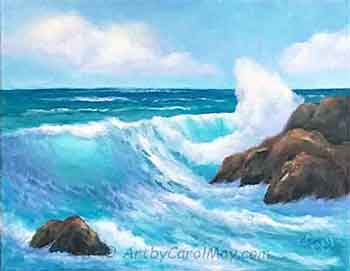 Painting the ocean with oils.
Painting the ocean with oils.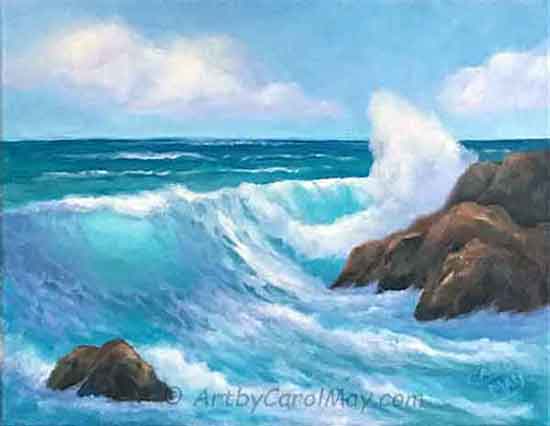 Painting the ocean with oils.
Painting the ocean with oils.What Does the Ocean Look Like?
Many of us have been to the ocean and have seen its beauty and wonder. Let's look at the ocean closely and see what we can learn about how to paint ocean.
Let's look at an ocean photo to see what we can learn.
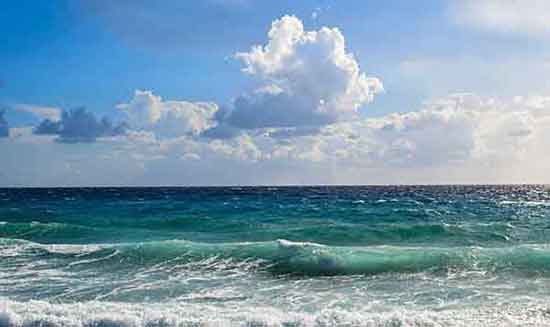 The beautiful ocean
The beautiful oceanThe distant water is very dark blue.
As we come toward the shore, the water starts to turn to a teal color. Closer to the shore the water is shallower and it turns green. When a wave rises up, it is a lighter yet because the light is passing thru the wave.
Horizontal water reflects the sky color.
The water in front of the wave is a lighter blue. This water is transparent. The blue is neutralized by the sand color seen thru the transparent water.
The base of the wave is dark.
It is thicker and it is in shadow. You can see the dark base in the center of the wave where it is cresting. Also, notice the dark shadows under the foam capping over the top of the wave.
Determine the light direction.
The light direction affects our entire painting. See the glints
of light on the right side of the ocean and the highlights on the right
side of the clouds. So we know the light is coming from the right.
When we are learning how to paint ocean, we will use this knowledge. Learn more about ocean waves.
Let's Do an Ocean Painting
Taking what we have learned, we will do a basic seascape painting that includes a foam burst.
What Do We Use for This Painting?
- Any warm yellow - Cadmium Yellow light is good.
- Burnt Sienna
- Alizarin Crimson
- Blue - Ultramarine or Thalo Blue
- Green - Thalo Green or Viridian
- Titanium White
This painting was painted on 11x14 gallery wrap canvas with hog hair bristle brushes. More on How to Start a Painting
How to Paint Ocean
- Do some thumbnail size sketches about the size of a postcard to figure out your composition, values and how to paint ocean.
- When you have it figured out then, sketch the composition on the canvas with either a pencil or thinned paint.
- Normally I use thinned yellow paint because it is easy to paint over. This time I used Ultramarine Blue, so it would show up better in the photograph.
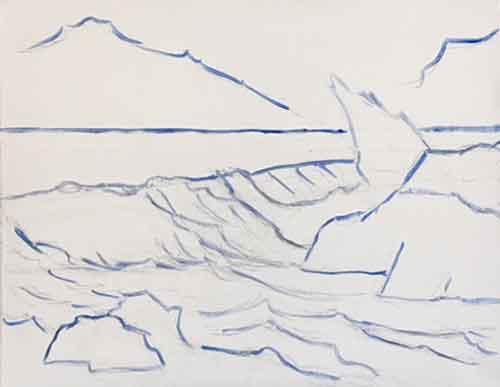 Sketch a line drawing on your canvas
Sketch a line drawing on your canvasBlock-in the Colors
Block-in a thin layer of paint that covers the canvas with the basic color of each item.
We will be blending the colors later or adding other colors on top of the blocked-in colors.
The first layer of paint needs to be thin. If the first blocked-in paint is too thick, it will just make a mess later.
Block-in the Background Water
Mix your blue and green for a dark color to start painting at the horizon.
Use more green as you come forward. Add a bit of white as you come forward more.
Put a few streaks of darker green on the light green areas to indicate shadowed water.
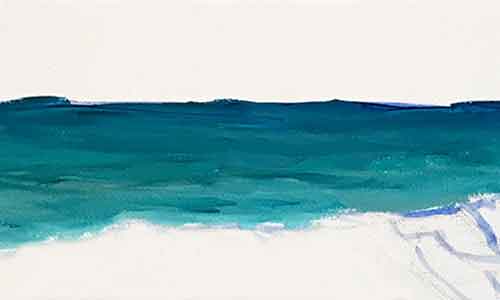 Paint the background water with the ocean colors
Paint the background water with the ocean colorsBlock-in the Wave
The wave will be darker at the base because the base is the thickest part of the wave.
Gradually lighten the wave towards the top by adding more white or a pale yellow.
Paint the spill-over with a lighter green because it is not very thick at all.
The foundation of painting ocean is painting the wave.
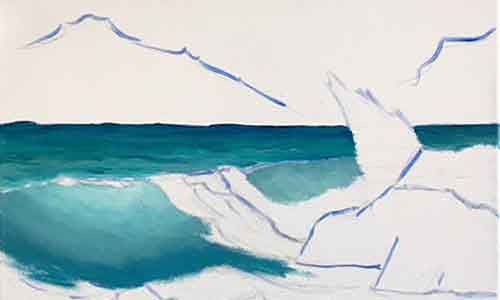 Use the same colors to block-in the wave
Use the same colors to block-in the wavePaint the Sky
Use less solvent than when blocking-in. The paint will cover the canvas.
Mix your blue with white. If it looks too blue add a tiny touch of Burnt Sienna to tone it down.
The light is coming from the left, so the sky is lighter on the left and darkens slightly to the right.
The sky gets lighter toward the horizon. As you paint down to the horizon, add some white. Warm up the blue with a bit of green toward the horizon.
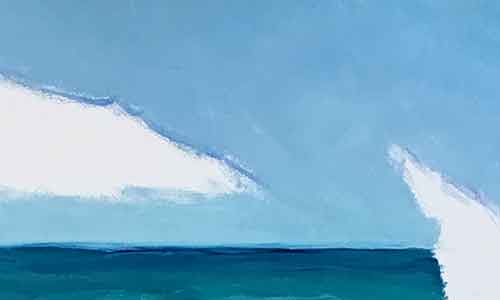 Paint a sunny day sky
Paint a sunny day skyPaint the Cloud and Foam Shadows
Mix a bit of blue and Alizarin with white for the shadow colors on the clouds and foam. If you prefer grey shadows, mix Ultramarine with Burnt Sienna and white.
Horizontal water reflects the sky colors. So, paint the sky blue colors on the water in front of the wave.
When you are learning how to paint ocean, use your artistic license. Mix in some of the ocean colors for variety.
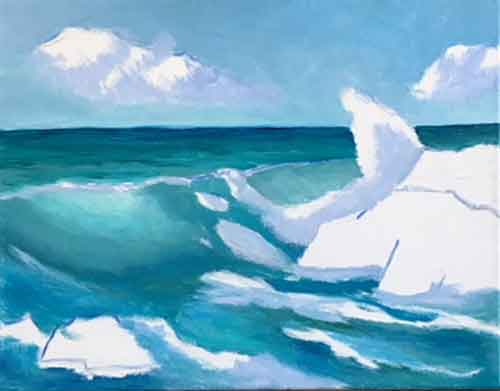 Block-in the shadow colors and horizontal water
Block-in the shadow colors and horizontal waterBlock-in the Rocks
Mix Burnt Sienna with your blue for the rock colors.
More blue makes the mix darker. Mix the color lighter or darker by varying the amount of blue. More about Mixing Paint Colors
The rocks will normally be darker down by the water where the get wet.
To help get the shape of the rocks, think of the rocks as a box with a top and sides.
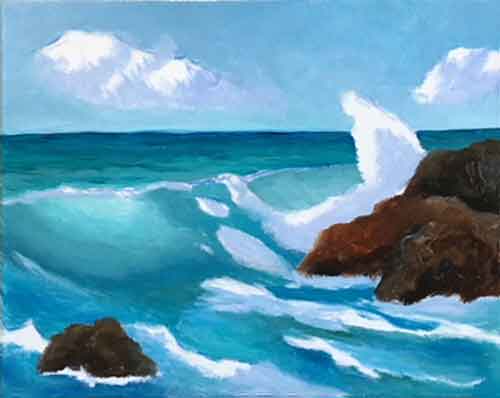 Paint the rocks darker by the waterline.
Paint the rocks darker by the waterline.Paint Your Sunlight Colors
Mix a little yellow with white for your sunlight color.
Paint it where the sunlight would be striking.
The sun would be hitting the top of the clouds, the top of the foam areas and also some of the wavelets in the foreground water.
When you are learning how to paint ocean remember the direction of the sunlight. The sun is coming from the left.
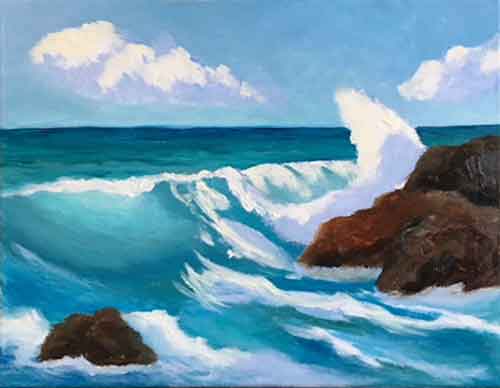 Block-in the sunlight on the foam.
Block-in the sunlight on the foam.Refine the Painting
- The entire canvas has been covered with the local colors of each item.
- Now we will refine and detail the painting.
Blend the Shadow and Sunlight Colors
- Using a clean, dry brush softly blend the sunlight and shadow colors together in the clouds and foam.
- There will be a soft line between the shadows and the highlights, no hard lines.
- When we paint ocean, there will be no hard lines because everything is moving.
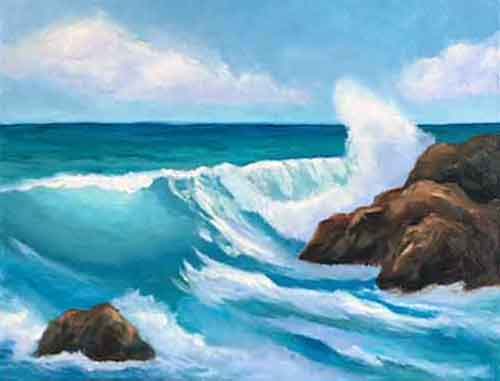 Blend the sun and shadow colors on the foam.
Blend the sun and shadow colors on the foam.Paint the Background Waves
Use the sky color and pull your brush horizontally across the background water for the front edge of a few small waves.
When we learn how to paint ocean, remember aerial perspective will make them look closer together in the distance.
Then pull the sunlight color on in a few places. Put some darker water in front of the waves for their shadows.
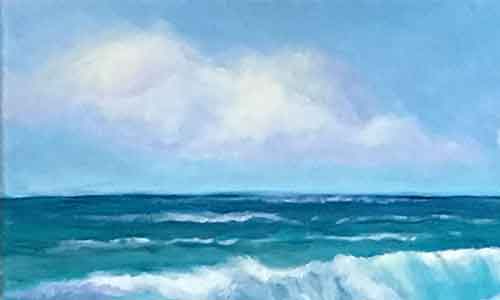 Paint the small background waves.
Paint the small background waves.Highlight the Rocks
Highlight the rocks with a mixture of Burnt Sienna mixed with either yellow or white or both.
The highlights in the shadow areas will be greyed by adding blue to the mixture.
Some of the shadowed areas may be very dark.
Splash a bit of shadowed foam against the base of the rocks.
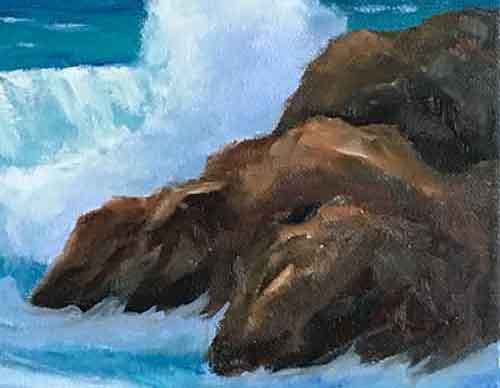 Highlight the rocks.
Highlight the rocks.Paint Foam Patterns on the Wave
Refine the foam patterns on the wave.
Use the lavender or grey shadow color (your choice of color) and highlight the foam with sunlight in a few places.
Use a medium water color to paint a shadow under the foam that is capping over the top of the transparent wave.
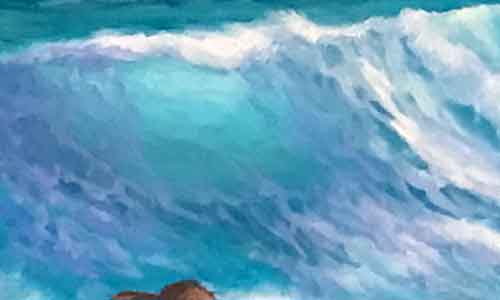 Paint foam patterns on the cresting wave.
Paint foam patterns on the cresting wave.You Can Paint the Ocean
The ocean is one of my favorite gifts from God and it's a fun challenge to paint.
Painting anything takes practice. The more you paint, the better your paintings will be.
Don't try to be perfect. Just paint and enjoy the journey.
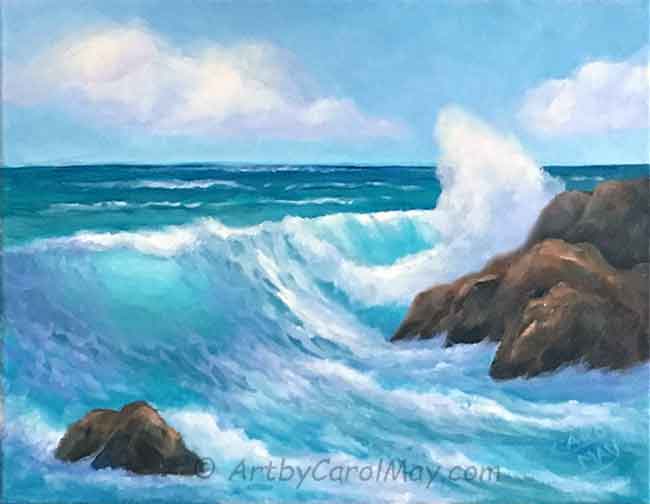 Look for any final adjustments
Look for any final adjustments





 Are you eager to learn how to oil paint? What are the essential supplies for oil painting? What do we need for clean-up and how long do oil paintings take to dry? Learn the rules of oil painting and t…
Are you eager to learn how to oil paint? What are the essential supplies for oil painting? What do we need for clean-up and how long do oil paintings take to dry? Learn the rules of oil painting and t…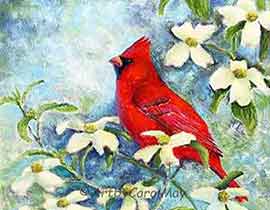 How do we create a focal point in art? Where do we put the focal point? How do we find the focus of an artwork? Should all paintings have a center of interest or can they have more than one? Learn fro…
How do we create a focal point in art? Where do we put the focal point? How do we find the focus of an artwork? Should all paintings have a center of interest or can they have more than one? Learn fro…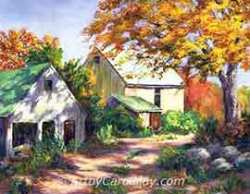 Art elements and principles appear over and over in good paintings. The elements and principles work together for us to create successful artwork. Art principles are the rules that govern how an artis…
Art elements and principles appear over and over in good paintings. The elements and principles work together for us to create successful artwork. Art principles are the rules that govern how an artis…